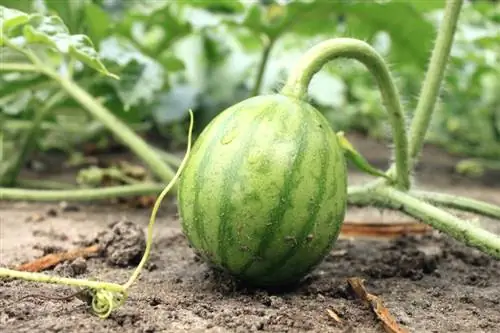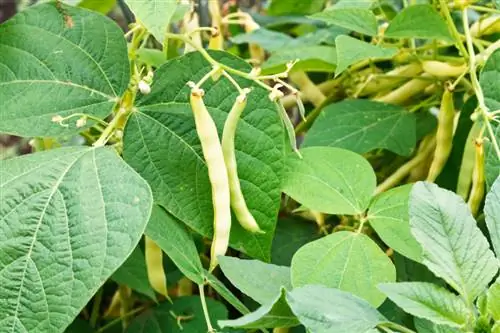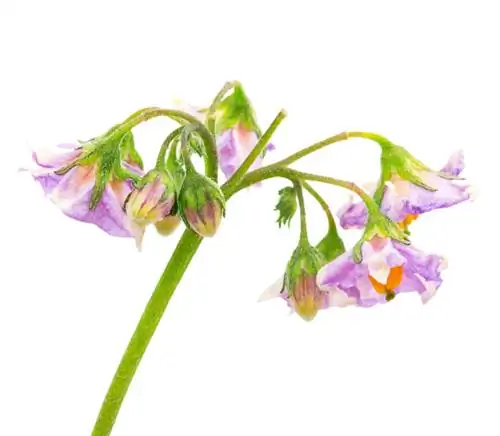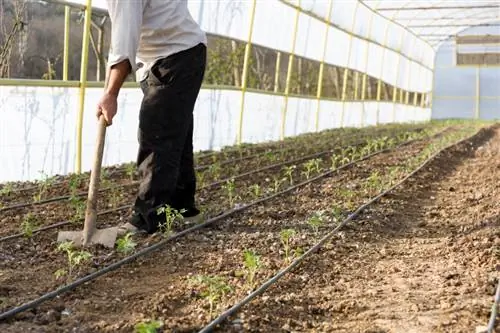- Author admin [email protected].
- Public 2023-12-16 16:46.
- Last modified 2025-01-23 11:20.
Watermelons imported from warmer countries are now in season in supermarkets here almost all year round. With a little skill, you can also harvest the low-calorie thirst quenchers from your own garden.
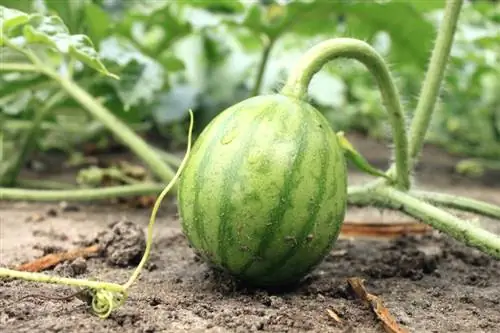
How to successfully grow and harvest a watermelon in the garden?
Growing watermelons in your own garden is possible if you grow them in good time, provide sufficient light and warmth, and protection from pests. Ripe fruits can be recognized by their sound, the yellow color at the contact point and dying parts of the plant.
The necessary conditions for cultivation
The Tsamma melon originally comes from hot regions of Africa as a wild form of watermelon. Since the flesh of these melons tastes rather bitter, to this day it is mainly their seeds that are roasted in fat or ground into flour. The cultivated high-yielding varieties of watermelon also require a lot of light and heat to grow, just like the original form. So that you can harvest ripe fruit in our latitudes, you have to use the season outdoors or in the greenhouse from the beginning to the end if possible.
Prefer watermelons on the windowsill
When growing and later planting watermelons, you should keep a few things in mind for a successful harvest:
- the sensitivity of the roots of young watermelon plants
- the slow transition from the room into the bright sunlight
- the danger of slugs in the garden
Since young watermelons react very sensitively to pricking out, they should, if possible, be sown directly in spring pots (€12.00 on Amazon) or in rottable nursery pots and planted out with them. In addition, the young plants must not be planted unprotected from the windowsill in a full sunny location on sunny days. It's better to get them used to the strength of the sunlight slowly by placing the pots in the garden for a few hours at a time over a few days. Young melon plants are a delicacy for slugs, which is why you should take protective measures such as chopped straw around the plants if there is a heavy slug infestation.
Harvest ripe fruits at the right time
If you have grown the plants in good time and planted them in a sufficiently warm location, you can tell that the fruits are fully ripe by the fact that the parts of the watermelon turn brown and die in autumn before the first frost. The degree of ripeness can also be recognized by the sound of the watermelons and the yellow color where they are placed.
Tips & Tricks
Botanically, watermelons should not actually be considered a fruit, but rather a vegetable, since all parts of the plant except the fruits die when they ripen.

